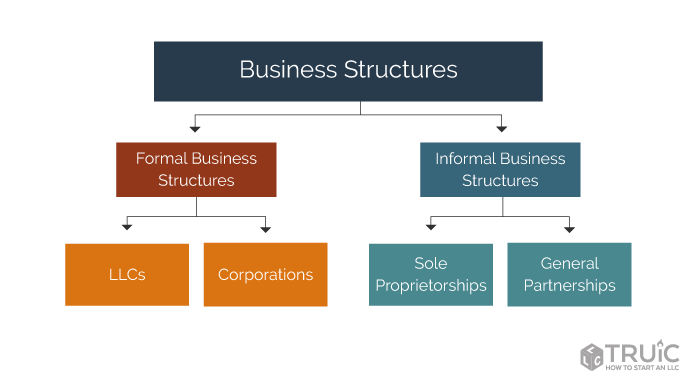Should I Start an LLC for My Architecture Firm?
Starting a limited liability company (LLC) for your architecture firm can provide several benefits.
Most importantly, an LLC structure offers limited liability to its owners, which can protect their personal assets from lawsuits and creditors.
For an architecture firm, lawsuits can commonly arise as a result of negligence allegations (e.g., overestimating the quantity of materials needed to complete a specified project.).
LLCs are also affordable, highly flexible (from a tax point-of-view), and can make your architecture firm seem more credible.

Interested in getting started? More than 84% of our readers form their LLC through a specialized LLC formation service in order to save time and avoid potential penalties.

Do I Need an LLC for an Architecture Firm?
LLCs are a simple and inexpensive way to protect your personal assets and save money on taxes.
You should form an LLC when there’s any risk involved in your business and/or when your business could benefit from tax options and increased credibility.
LLC Benefits for an Architecture Firm
By starting an LLC for your architecture firm, you can:
- Protect your savings, car, and house with limited liability protection
- Have more tax benefits and options
- Increase your business’s credibility
Limited Liability Protection
LLCs provide limited liability protection. This means your personal assets (e.g., car, house, bank account) are protected in the event your business is sued or if it defaults on a debt.
Architecture firms will benefit from liability protection because of risks related to designs, structures, copyright blueprint registry, and even possible employment challenges.
Example 1: Your architecture firm designed a building that used coated galvanized steel instead of stainless steel. This was deemed an unacceptable replacement by an engineering body, which thus sued your firm for negligence in the project’s design. Thanks to limited liability, your personal assets will be protected from any damages your business may be liable to pay.
Example 2: An engineer at your architecture firm overestimates the number of materials a project needs, resulting in the client suffering significant financial loss. If the client sued, any damages you might be required to pay cannot be levied against your personal assets – only the businesses.
Example 3: Your firm attempts to take on too many new projects, which results in subpar work that dissatisfies a number of clients. One of these clients sues your firm for failing to meet its standard of care. If you are found liable to pay damages, you will only be required to pay them with your business assets.
Example 4: A competing architecture firm claims you stole one of their building designs and decides to sue your business.
An LLC will also protect your personal assets in the event of commercial bankruptcy or loan default.
To maintain your LLC’s limited liability protection, you must maintain your LLC’s corporate veil.
LLC Tax Benefits and Options for an Architecture Firm
LLCs, by default, are taxed as a pass-through entity, just like a sole proprietorship or partnership. This means that the business’s net income passes through to the owner’s individual tax return.
The business’s net income is then subject to income taxes (based on the owner’s tax bracket) and self-employment taxes.
Sole proprietorships and partnerships are taxed in a similar way to LLCs, but they do not offer limited liability protection or other tax options.
S Corp Option for LLCs
An S corporation (S corp) is an IRS tax status that an LLC can elect. S corp status allows business owners to be treated as employees of the business (for tax purposes).
S corp tax status can reduce self-employment taxes and will allow business owners to contribute pre-tax dollars to 401k or health insurance premiums.
The S corp status requires that the business pay the employee-owner(s) a reasonable salary for the work they perform.
In addition, the business might need to spend more on accounting, bookkeeping, and payroll services. To offset these costs, you’d need to be saving about $2,000 a year on taxes.
We estimate that if an architecture firm owner can pay themselves a reasonable salary and at least $10,000 in distributions each year, they could benefit from S corp status.
You can start an S corp when you form your LLC. Our How to Start an S Corp guide will lead you through the process.
Credibility and Consumer Trust
Architecture firms rely on consumer trust. Credibility plays a key role in creating and maintaining any business.
Businesses gain consumer trust simply by forming an LLC.
A growing business can also benefit from the credibility of an LLC when applying for small business loans, grants, and credit.
Launch Your LLC With Tailor Brands
More than 84% of our readers form their LLC through a specialized LLC formation service like Tailor Brands in order to save time and avoid potential penalties.
How to Form an LLC
Forming an LLC is easy. There are two options for forming your LLC:
- You can hire a professional LLC formation service to set up your LLC for a small fee
- Or, you can choose your state from the list below to start an LLC yourself
Select Your State
- Alabama LLC
- Alaska LLC
- Arizona LLC
- Arkansas LLC
- California LLC
- Colorado LLC
- Connecticut LLC
- Delaware LLC
- Florida LLC
- Georgia LLC
- Hawaii LLC
- Idaho LLC
- Illinois LLC
- Indiana LLC
- Iowa LLC
- Kansas LLC
- Kentucky LLC
- Louisiana LLC
- Maine LLC
- Maryland LLC
- Massachusetts LLC
- Michigan LLC
- Minnesota LLC
- Mississippi LLC
- Missouri LLC
- Montana LLC
- Nebraska LLC
- Nevada LLC
- New Hampshire LLC
- New Jersey LLC
- New Mexico LLC
- New York LLC
- North Carolina LLC
- North Dakota LLC
- Ohio LLC
- Oklahoma LLC
- Oregon LLC
- Pennsylvania LLC
- Rhode Island LLC
- South Carolina LLC
- South Dakota LLC
- Tennessee LLC
- Texas LLC
- Utah LLC
- Vermont LLC
- Virginia LLC
- Washington LLC
- Washington D.C. LLC
- West Virginia LLC
- Wisconsin LLC
- Wyoming LLC
For most new business owners, the best state to form an LLC in is the state where you live and where you plan to conduct your business.
Do LLCs Need Insurance?
Each and every LLC must purchase business insurance in order to protect all the assets it owns.
The limited liability protection that is intrinsic in all LLCs shields the personal assets of owners, but leaves a business’s assets exposed. To protect these as well, an LLC needs to purchase insurance.
Common Situations Business Insurance May Cover for an Architecture Firm
Example 1: During a visit to your office, a client slips on a wet floor near your restroom and breaks an arm. Because your employee forgot to display a “wet floor” sign, the client demands your business pay for his medical care. General liability insurance would cover the client’s medical treatment.
Example 2: While you visit a client’s home to discuss a new office building design, you trip over her cat, fall into her large television, and smash your hand through the screen. General liability insurance would cover the cost to repair the client’s damaged property.
Example 3: A competitor claims you stole his logo design and decides to sue your business. While you disagree with the accusation, you need to hire an attorney immediately. Your general liability policy will pay for your legal representation and any awarded settlement.
Other Types of Coverage Architecture Firms Need
While general liability is the most important type of insurance to have, there are several other forms of coverage you should be aware of. Below are some other types of insurance all architecture firms should obtain.
Professional Liability Insurance
This insurance covers your business in the event a client accuses you of negligence due to a mistake or failure to perform. If a client claims your work caused them harm and sues your company, professional liability insurance would cover your legal fees and any required settlement.
Commercial Property Insurance
You made a major investment in your business equipment and supplies. If you own the building in which you operate, commercial property insurance would cover the cost of repairing or replacing your business-related property in the event of a fire, theft, or natural disaster. This includes structural damage to your building or grounds as well as the equipment and supplies you store there.
Workers’ Compensation Insurance
If you have any employees, most states will require you to carry workers’ compensation insurance for both part-time and full-time workers. This coverage protects your employees if they become injured at work or fall ill after a work-related accident. It not only covers an employee’s medical bills and lost wages if they need time to recover, but also any disability or death benefits stemming from a work-related accident.
Should I Start an LLC FAQ
Choosing the right business structure depends on your business’s unique circumstances and needs. However, unless your business is very low risk (like a hobby), an LLC is likely the better option.
Visit our LLC vs. Sole Proprietorship guide to learn more.
At a minimum, you’ll need general liability insurance.
Read our Architecture Firm Business Insurance article for more info.
Each and every LLC must purchase business insurance in order to protect all the assets it owns.
The limited liability protection that is intrinsic in all LLCs shields the personal assets of owners, but leaves a business’s assets exposed. To protect these as well, an LLC needs to purchase insurance.
Visit our How to Start an Architecture Firm guide to learn more about the costs of starting and maintaining this business.
Ongoing expenses will be dependent on the overhead expenses you enter into and how many employees you need to maintain. Your building, licensing, materials, and staffing are some of the expenses that will directly impact the bottom line.
Learn more about running an architecture firm.
Architecture firms make money by charging fees for designing business buildings or other structures. The projects your company takes on can also include civil and city planning agreements.
Learn more about starting an architecture firm.
Architecture firms provide planning, designing, and construction of both residential and commercial buildings. The average profit margin for an architecture firm needs to be at least 15% to be sustainable.
Learn more about starting an architecture firm.


